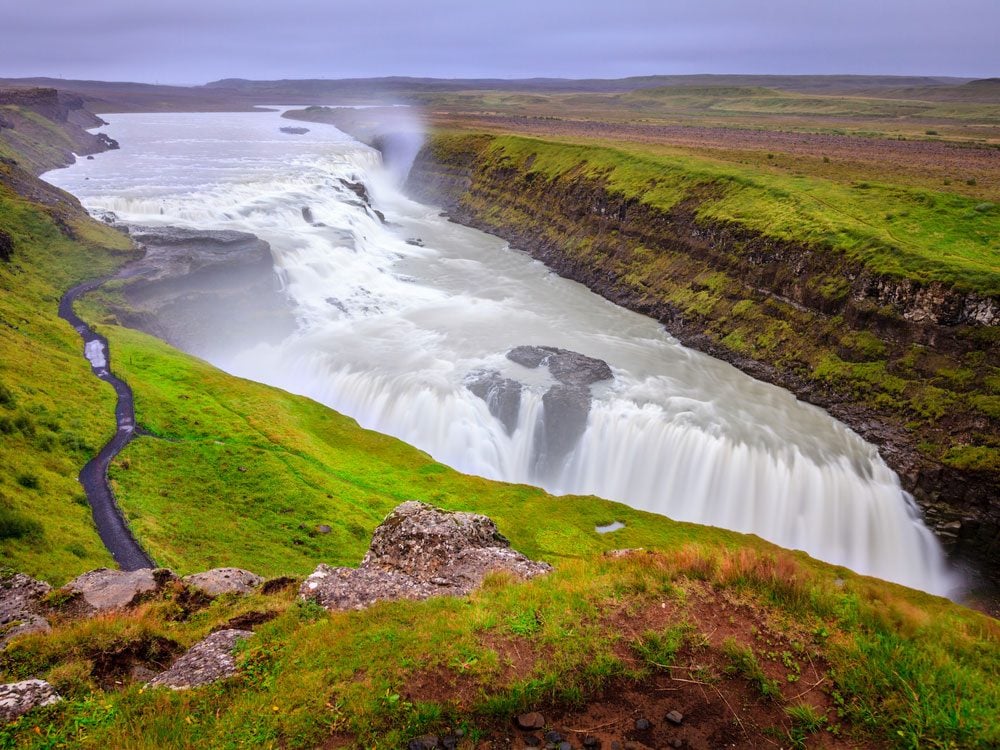
Iceland Attractions: Gullfoss
The powerful, two-tier waterfalls at Gullfoss on the Hvita present a stunning sight, whether part-frozen in winter, in full flood during the spring melt, or roaring away during the long summer twilight. Their setting in a deep canyon adds to the spectacle, as does the landscape of icy peaks and gravel desert immediately north—quite a contrast to the green, spray-fed vegetation closer to the river. Take care at Gullfoss and always supervise children, as paths are slippery and there are no safety railings or warning signs.
Don’t forget about Canada’s 10 most beautiful waterfalls!
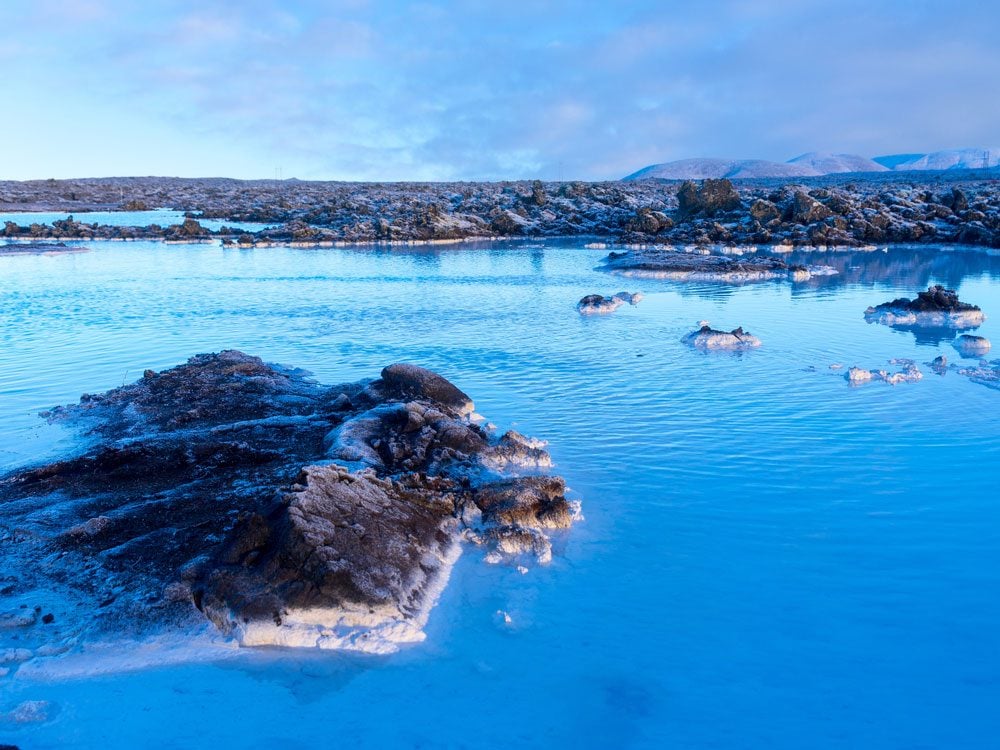
Iceland Attractions: The Blue Lagoon
The Blue Lagoon is Iceland’s premier geothermal spa and one of the country’s most beautiful. Set in a desolate lava wilderness, the lagoon’s bright blue waters add a surreal splash of colour. You can laze in the steaming waters, have a beauty treatment, enjoy an excellent meal or stay nearby and catch the seasonal aurora display. If you have your own transport, consider a detour to see some unusual sights: Grindavik’s Saltfish Museum, the Seltun hot springs and Selatangar’s abandoned fishing camp.
Make sure to add these 15 other beauty destinations to your bucket list.
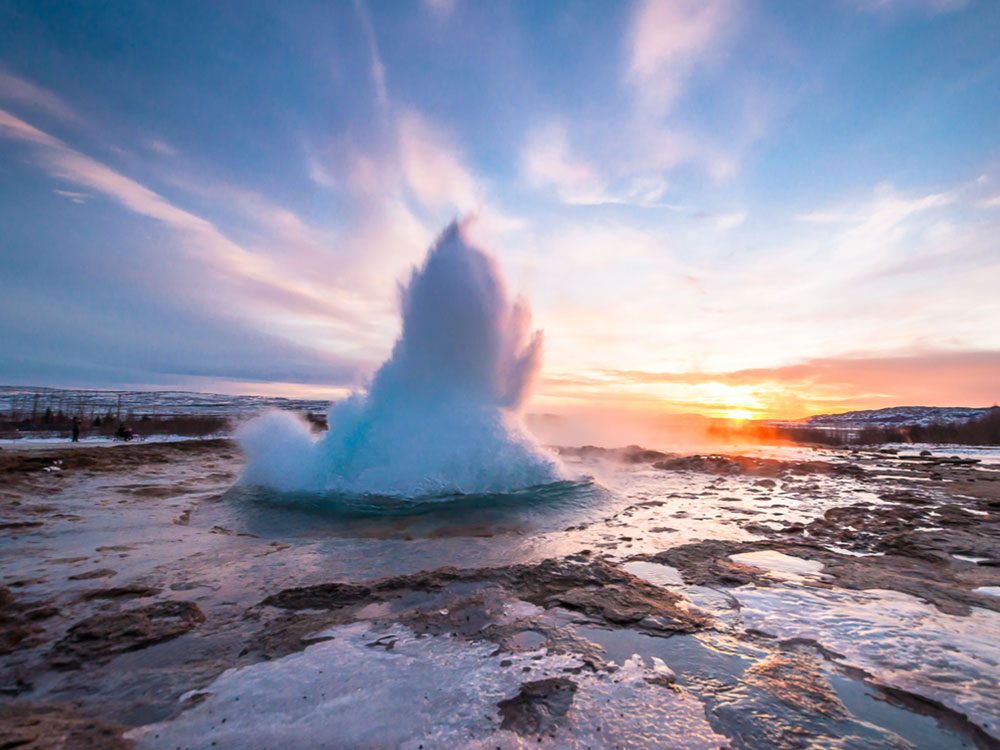
Iceland Attractions: Geysir Hot Springs
The Geysir Hot Springs area lies on the lower slopes of Bjarnarfell, 90 minutes northeast of Reykjavik, and comprises a dozen or more hot water blowholes, including Geysir, the spout that gave its name to other geysers worldwide. The area became active about 1,000 years ago and today the most impressive spout is Strokkur, which you will definitely see in action. Geysir’s pool is far larger but count yourself lucky if you see more than bubbles. Visit Haukadalur for an interesting old church and some undemanding hiking.
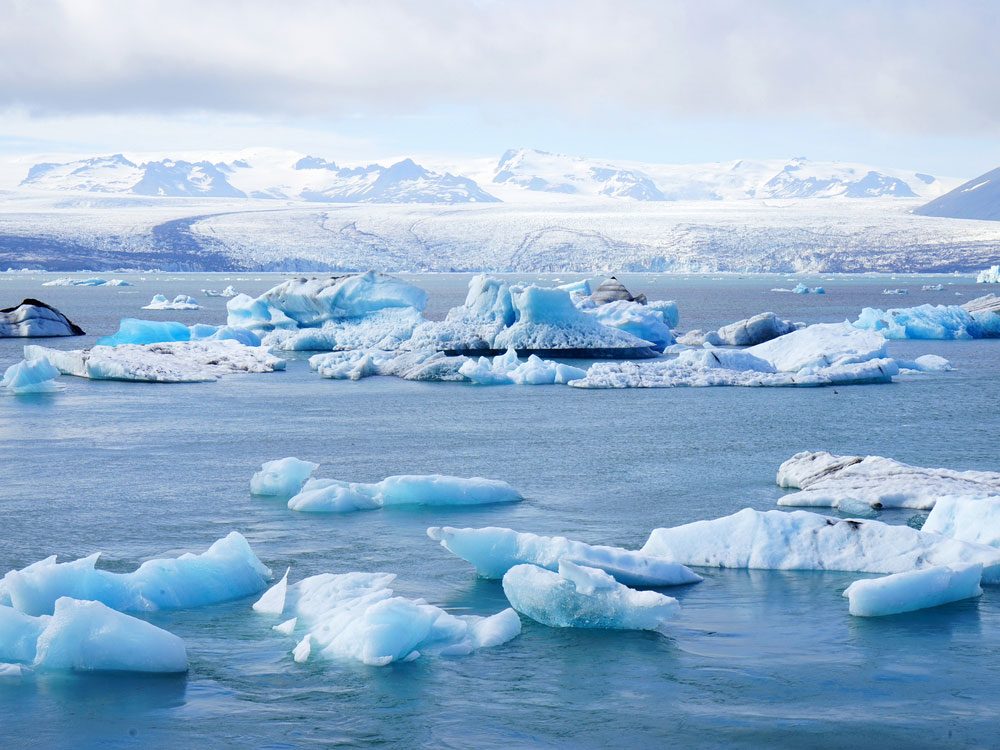
Iceland Attractions: Vatnajokull National Park
Vatnajokull National Park covers 12,000 sq. km, 10 per cent of Iceland’s surface, and comprises the Vatnajokull icecap and disconnected areas around its fringes. The long canyons and enormous waterfalls at Jokulsargljufur; Skaftafell’s high moorland and paired glaciers; Lonsoraefi’s wilderness and remains of Lakagigar’s catastrophic volcanic event can keep you occupied for days. Hiking, ice-climbing, skidooing and even dog-sledding are among the activities possible within this huge park.
We’ve rounded up the top 10 most extreme travel adventures in the world.
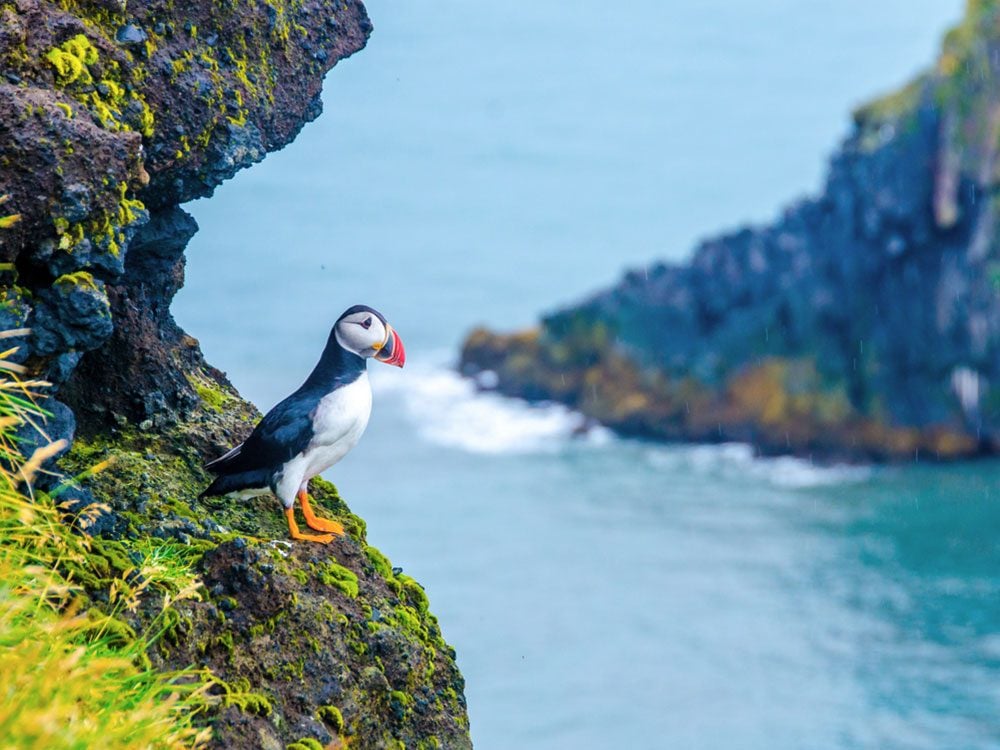
Iceland Attractions: Latrabjarg Bird Cliffs
The Latrabjarg Bird Cliffs are just about as remote a place as you can readily reach in Iceland. Traditionally a farming area, the region has become almost depopulated since the 1960s, leaving Latrabjarg to the millions of seabirds that return here to breed during the summer months. Most people come here to see the abundant numbers of charismatic puffins. On the way there is also a worthwhile folk museum and an amazing beach at Breioavik, probably the last thing you would expect to find in this part of the world.
Here are the 10 best tropical destinations for bird watchers.
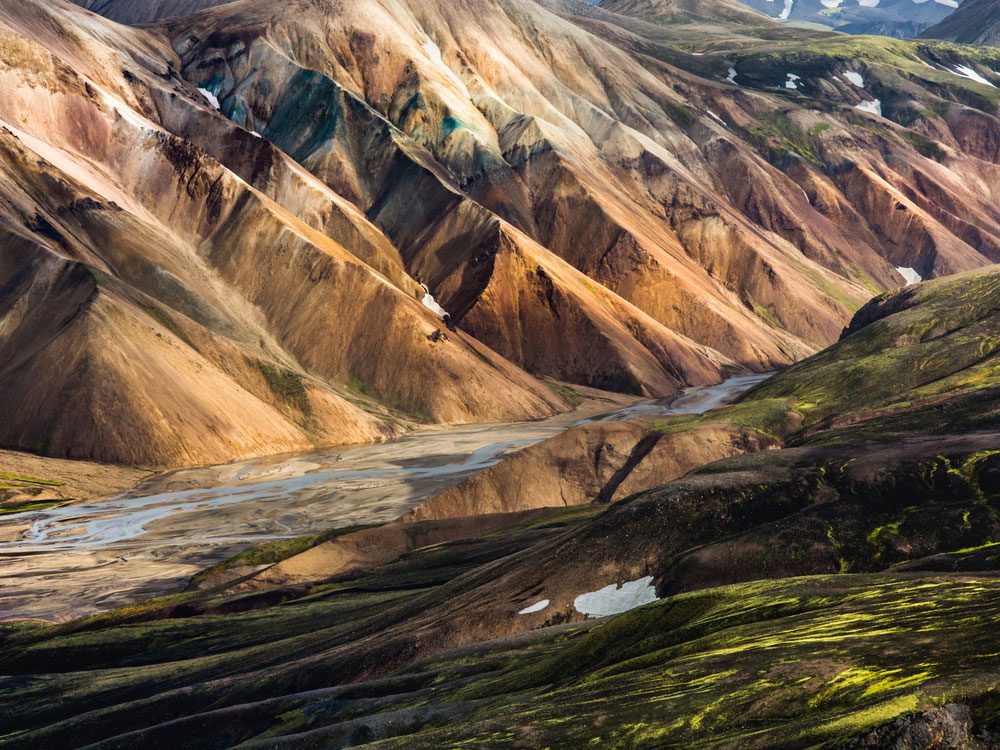
Iceland Attractions: Landmannalaugar
Landmannalaugar, meaning “Countryman’s Bathing Pool,” is a lush hot springs area in southern Iceland surrounded by a stark wilderness of snow streaked mountains, ancient lava fields and flat glacial river valleys. Much of the countryside here has been shaped by Hekla, the country’s second most active volcano. Excellent camping facilities make it a great spot from which to appreciate the rugged interior. It is connected by summer-only buses from Reykjavik. You can also hike here along the exceptional Laugavegur trail.
Have a safe and fun camping experience by following this checklist.
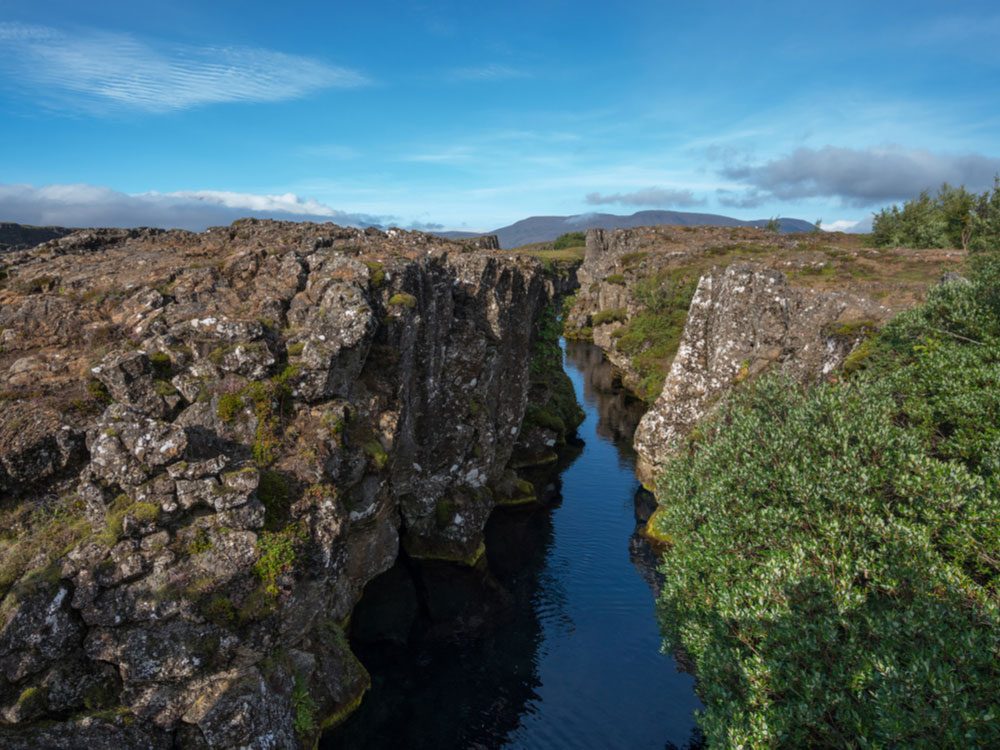
Iceland Attractions: Pingvellir National Park
Iceland’s location on the Mid-Atlantic ridge is obvious at Pingvellir (Assembly Plaint) where the land has crashed in a deep scar stretching north from Lake Pingvallavatn. In AD 930, this dramatic setting was chosen by the island’s 36 chieftains as the site of their annual Alping (General Assembly). The country’s entire population of 60,000 gathered to hear the laws and to settle disputes, occasionally by combat. The Alping’s power declined after Iceland accepted Norwegian sovereignty in 1262, but the last assembly was held here in 1798.
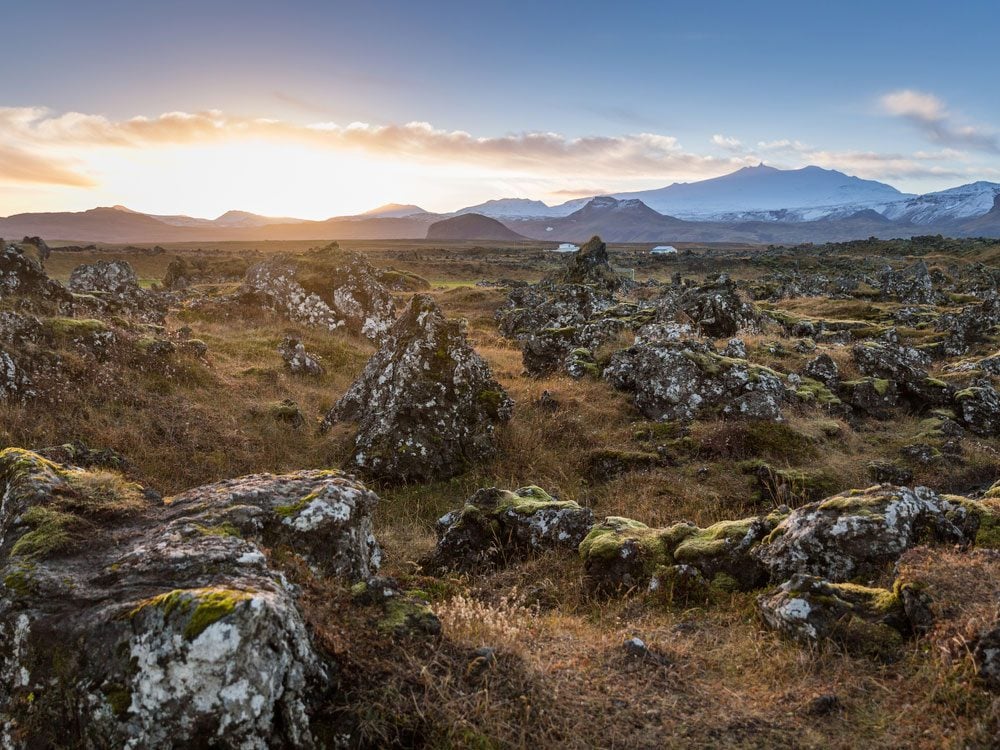
Iceland Attractions: Snaefellsjokull National Park
Established in 2001, Snaefellsjokull National Park protects the snowy snout of Snaefellsnes Peninsula, which juts out 70 km into the sea from the western coast. With a beautiful conical volcano at its core, Snaefellsjokull is a place steeped in ancient, literary and New Age folklore, though most people who visit today are more interested in the mountain’s hiking or climbing potential. Snaefellsjokull also makes a splendid backdrop for delving into the area’s fishing history or bird-watching for rare species.
Check out 14 of the most remote places on Earth!
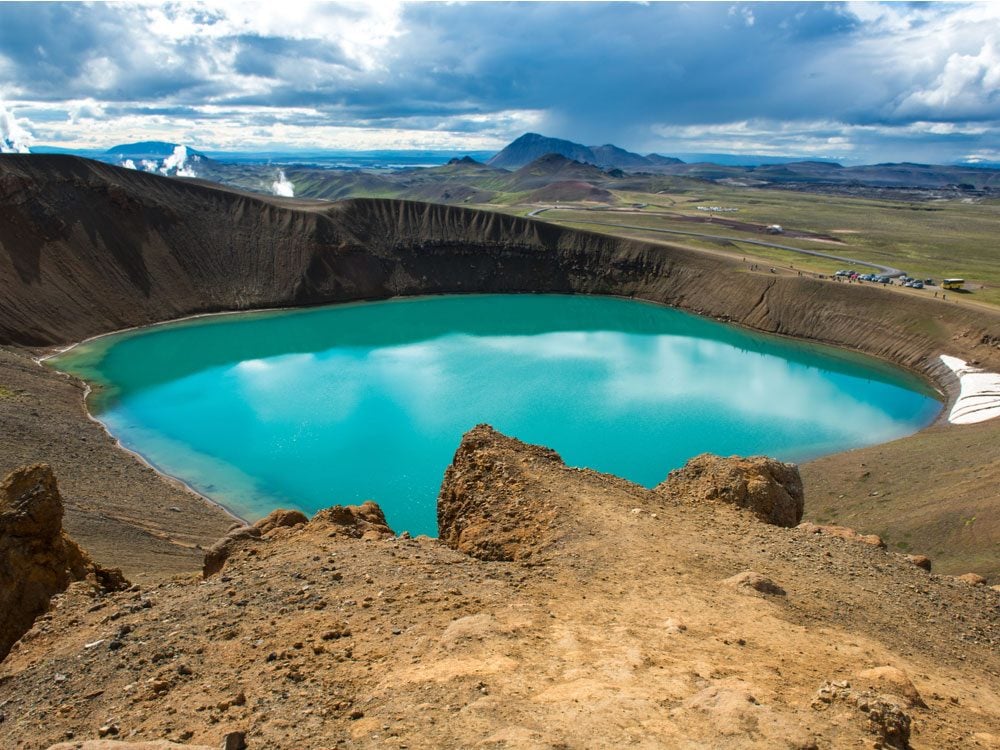
Iceland Attractions: Lake Myvatn Area
Known as Midge Lake in English, Myvatn’s unkind label belies reality: it is a peaceful spread of water east of Akureyi, home to swarms of wildfowl in summer. The surrounding landscape, however, is anything but tranquil, with Myvatn hemmed in by a spectacular mix of extinct cinder cones and twisted lava formations, hot bathing pools, boiling mud pits and screaming volcanic vents. North-shore Reykjahlio is Myvatn’s main settlement, where you can organize tours to local sights and also to Askja Caldera in the barren interior.
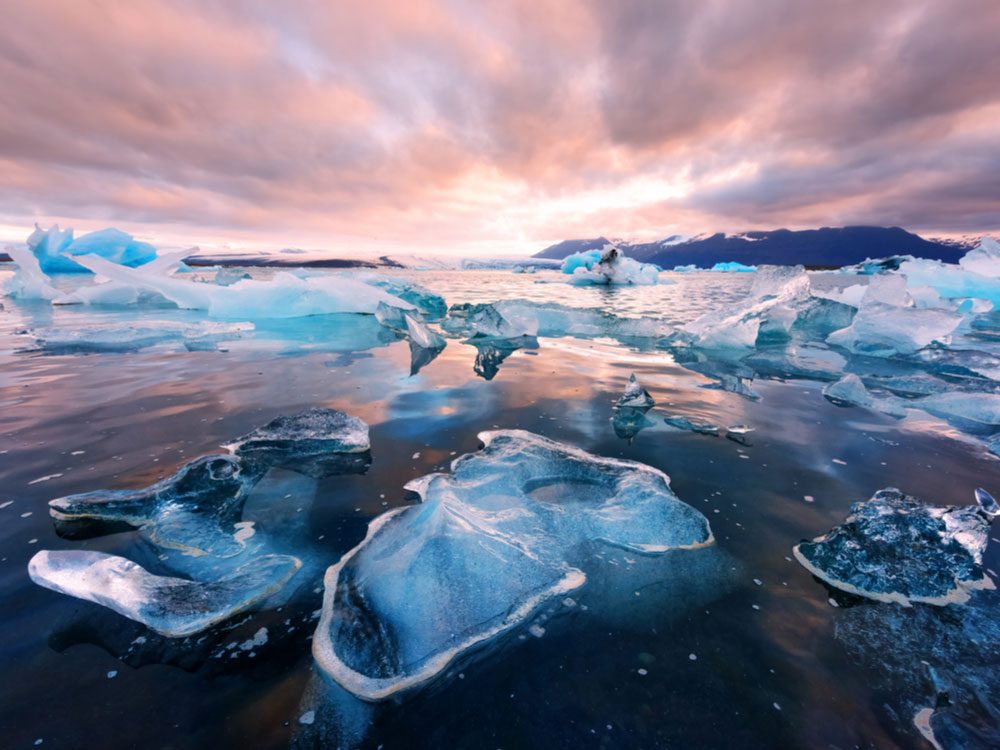
Iceland Attractions: Jokulsarlon
Jokulsarlon is a broad lagoon on the southeastern coast, where the nose of the Breioamerkurjokull glacier edges down to the sea. The lagoon formed after the glacier began receding during the 1940s and today presents a striking scene, filled by a mass of icebergs freshly broken off the glacier. With a deep, black-sand beach behind you and the white mass of Europe’s largest icecap, Vatnajokull, on the horizon, Jokulsarlon is a great spot to stretch your legs on the long drive from Vik to Hofn.
Next, find out the 13 tourist traps around the world actually worth visiting!